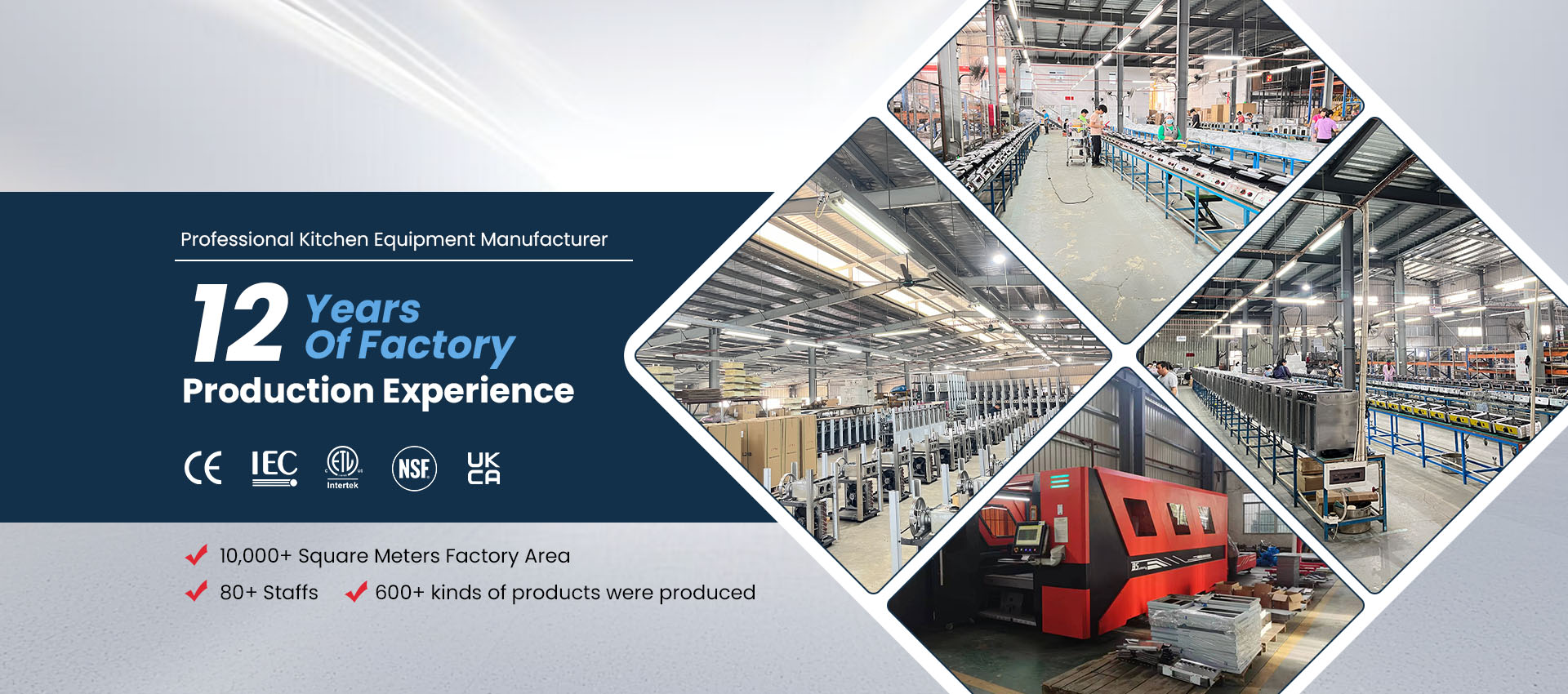How To Install A Gas Deep Fryer
Installing a gas deep fryer properly is essential for safety, efficiency, and long-term performance. Whether you’re setting up a new commercial kitchen or upgrading your home cooking space, following the correct installation steps ensures your fryer operates smoothly and safely.
This guide walks you through the complete process — from preparation to connection — so you can install your fryer confidently.
1. Prepare the Installation Area
Before unpacking your fryer, confirm that the space meets all safety and ventilation requirements.
Place the fryer on a level, non-combustible surface such as tile or stainless steel.
Maintain at least 6–8 inches of clearance from walls or other appliances to allow heat dissipation.
If installing indoors, position the fryer under a commercial exhaust hood or adequate ventilation system to remove fumes and grease vapor.
Ensure easy access to the gas shut-off valve for emergency control.
For commercial settings, check your local building and fire codes to ensure compliance before installation.
2. Verify Gas Type and Pressure
Every fryer is designed for a specific fuel type — natural gas (NG) or propane (LP). Using the wrong fuel without conversion can cause dangerous pressure buildup and equipment damage.
Check the rating label or user manual for the correct gas type.
If you need to switch from natural gas to propane, use a manufacturer-approved conversion kit and hire a qualified technician to perform the change.
Also verify that your gas supply line matches the required BTU rating of the fryer to ensure consistent pressure and performance.
3. Assemble Necessary Equipment
You’ll need the following tools and parts for a proper connection:
Adjustable wrench
Pipe thread sealant or gas-rated Teflon tape
Flexible gas connector hose rated for commercial fryers
Shut-off valve (installed near the fryer)
Leak detection solution (soapy water works fine)
Having all materials ready ensures a smooth and safe setup.
4. Turn Off the Main Gas Supply
Before connecting any gas fittings, shut off the main gas supply completely. This prevents accidental leaks during installation.
Locate the main valve (on your building line or propane tank) and close it tightly.
5. Connect the Gas Line
Attach the shut-off valve to your gas supply pipe if one isn’t already installed.
Apply a thin layer of thread sealant or gas-rated tape to the threaded fittings.
Connect the flexible gas hose from the shut-off valve to the fryer’s gas inlet.
Tighten connections securely with a wrench, but avoid over-tightening, which can damage threads or seals.
Ensure the hose runs smoothly without sharp bends or kinks that could restrict gas flow.
6. Check for Gas Leaks
Once connected, turn on the gas supply slightly and test all joints using a soapy water solution.
Apply the solution to each connection.
If bubbles form, there’s a leak — turn off the gas, tighten fittings, and retest.
Repeat until no bubbles appear.
Never use an open flame to check for leaks.
If leaks persist, stop immediately and contact a certified gas technician for inspection.
7. Ignite the Pilot Light
When all connections are secure:
Turn the fryer’s control knob to “Pilot” mode.
Press and hold the knob to release gas to the pilot burner.
Ignite the pilot with a long lighter.
Continue holding the knob for about 30 seconds until the pilot stays lit.
Switch the control to “On” to activate the main burners.
The pilot flame should burn steady blue — a yellow or flickering flame indicates poor air-gas balance or blocked burner ports.
8. Test the Fryer
Once the pilot is stable:
Fill the fryer vat with oil up to the manufacturer’s recommended level.
Turn on the burner and heat to your desired temperature.
Monitor the flame pattern and heating consistency for 10–15 minutes.
If the fryer heats evenly and the flame remains blue, your installation is complete.
9. Maintenance and Safety Tips
Inspect hoses and connections regularly for wear or leaks.
Clean burners and vents monthly to prevent carbon buildup.
Keep the ventilation hood filters grease-free.
Always shut off gas after use or during cleaning.
Schedule a professional safety inspection annually.
Proper maintenance extends your fryer’s life and ensures reliable performance every day.
Final Thoughts
Installing a gas deep fryer is straightforward with careful planning and attention to detail. Always match the correct gas type, test for leaks, and follow local safety codes to protect your kitchen and staff.
For long-lasting performance, invest in high-quality Gas Fryers and accessories designed for efficiency and safety.
Explore premium gas fryers, griddles, and kitchen appliances at MLP Kitchen — your trusted source for professional, high-performance cooking equipment.



